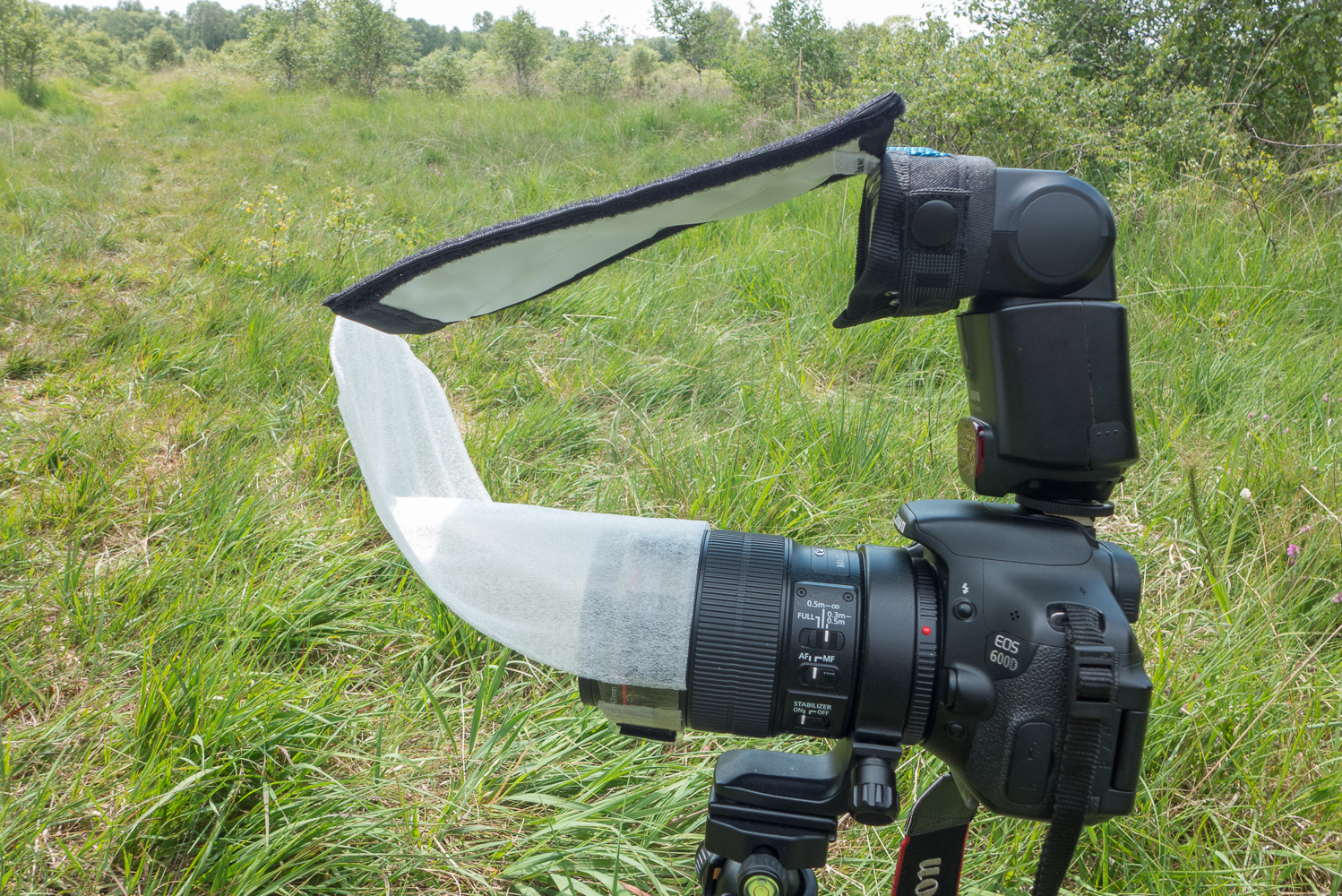Simple is always best. The above rig is a good way of getting reliable soft light.
I work from first principles when it comes to designing macro flash rigs. The rigs themselves are simple, but the thinking behind them is more complex. I use a principle I called Concave Diffusion, a term I invented and defined in early 2010 and explained with these diagrams. I had already been using these principles before 2010, but this is when I defined how it works. The essential principle is to wrap the light around the subject using a diffuser with a concave face. These diagrams explain how light from diffusers and light modifiers work. Blue is the least bright part, yellow is brighter, and red is concentrated light which causes blown highlights.
https://www.flickr.com/photos/steb1/sets/72157623486703625
This year just gone I was using two rigs. The first is very simple, and adaptable because both the reflector and diffuser can be bent into different positions for different lighting. It uses a bounce flash card to bounce light from a hot shoe flash down onto a thin concave diffuser (as the light is already diffused from the bounce card. With clever positioning it can replicate daylight in look.
On the link below, the other positions the flash can be put in can be seen, along with it's components
https://www.flickr.com/photos/steb1/sets/72157659522041169
This is a good illustration of the type of photograph it can take. This is completely full flash, and there is no daylight contribution at all, as the light levels were very low. But I straightened the diffuser, and lifted the bounce card up, so light was reflected over the subject on the background, to illuminate the background, even though it was some distance off, and would normally have been black with flash.
No other macro flash set up I know of is so versatile, and can also illuminate the background some distance away.
It can be used like a normal macro flash
Whereas here I twisted it diffuser up so it was like a soft box, and only used it for fill in. The blue background is the sky. You can do all this quickly without having to take anything on or off. Or if the natural light is good, you can just switch off the flash, and take a natural light shot.
On this set up I modified a Yongnuo Macro Lite, a bit like a ring flash but with 2 semi-circular tubes to give incredibly soft light without the usual ugly reflections. This is more for real close range or high magnification stuff such as with the Canon MP-E 65 f2.8 1-5X macro lens.
Other views and the components can be seen on the link below
https://www.flickr.com/photos/steb1/sets/72157660593958210
It's described on Kurt's blog (Orionmystery)
http://orionmystery.blogspot.co.uk/2015/11/diffusing-macro-lite-flashes-or-ring.html
This is the sort of light and image you can get from this set up. Remember this is a very cheap and affordable flash, and it is the best value set up for the quality of light.
Azure Damselfly portrait
A pair of 14-spot Ladybirds. These are very shiny little beetles and illustrate the control of specular reflections this rig gives.










































